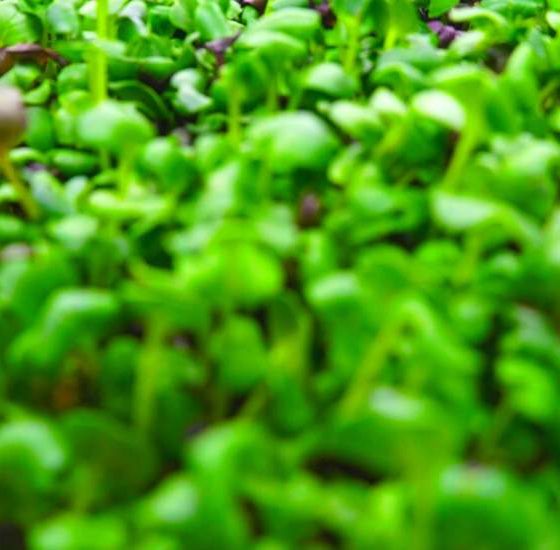Sea squill blooms from August to October.
Foraging sea squill. Find out why you would unearth this perennial.
The sea squill has gained the almost iconic status of late and is known as the ‘harbinger of Autumn’. This is due to the fact that the flowers pop out all over the country at the end of the dry summer, sometime before the first rain. The author of the book, Weeds For Health On Gozo, Heléna Szöllősy uncovers the natural benefits of Sea Squill and how you can use it to help with coughs and colds.
Urginea scilla – Steinheil
Botanical Name: Urginea scilla - Steinheil Synonyms: Urginea pancration, Uriginea maritima , Urginea anthericoides, Scilla maritima, Drimia maritima. Family Name: Asparagaceae subfamily Scilloideae Maltese Name: Basal tal-għansar Common Names: Sea Squill, Sea Onion, White Squill Meaning of the Name: Urginea, named for an Arabian tribe in Algeria, known as Ben Urgin, maritima, from Latin, growing by the sea.
DESCRIPTION
Sea squill is a perennial plant with fibrous roots proceeding from the base of a large, tunicated bulb. The outer scales of which are thin and papery, red or orange-brown in colour. The bulb, which is usually only half immersed in the sand, has long, lanceolate, pointed dark-green leaves when fully grown it can be 60 cm long. From the middle of the leaves, a round, smooth, succulent flower stem rises, terminating in a long spike of whitish flowers, with purple peduncles.
The tall flowers appear in late summer before the autumn rains when the plant is without leaves. The flower is about 1.5 cm wide and has six tepals each with a dark stripe down the middle. The tepals are white, with the exception of those on the red-flowered form. The fruit is a capsule up to 1.2 cm (0.47 in) long.
- Habitats: dry sandy places, especially near the coast
- Range: Native to southern Europe-Mediterranean, western Asia, and northern Africa
- Status for Malta: Doubtful origin. It is not established if this species is native or not. Common in the wild.
- Parts Used: The bulbs of squill are collected soon after flowering in the autumn, sliced transversally and dried for later use.
- Herbal Actions: Antiarrhythmic, Antidandruff, Cardiotonic, Diuretic, Emetic, Expectorant
INTERNAL USES:
- The Bulb has been widely used by herbalists, mainly for its effect upon the heart and for its stimulating, expectorant and diuretic properties. The fresh bulb is slightly more active medicinally than the dried bulb, but it also contains a viscid acrid juice that can cause skin inflammations.
- Squill is a cardiotonic similar to digitalis. Squill also has a motivating action on the heart and hence has been used by physicians to cure heart failure and help in water retention when there is concern about the heart. It contains cardiac glycosides which are strongly diuretic and relatively quick-acting. The dried bulb is cardiotonic, strongly diuretic, emetic when taken in large doses, and an expectorant.
- It is used internally in the treatment of bronchitis, bronchitic asthma, whooping cough, and edema and is a potential substitute for foxglove in aiding a failing heart. Squill is a strong and effective expectorant, a medicine that stimulates the production of phlegm and is widely used to cure unrelieved bronchitis, particularly when there is low sputum production leading to an irritating dry cough. Usage of squill aids in the secretion of a liquefied mucus that smoothens the progress of expectoration. At the same time, the mucilage substance makes the bronchiole passages simpler and calms them down and in this way helps the stimulation of the glycosides. Many herbal physicians also use squill to heal bronchial asthma as well as whooping cough.
EXTERNAL USES:
- External Use: Externally, the bulb has been used in the treatment of dandruff and seborrhoea and has been used in hair tonics.
- Edible Use: none
- Other Use: miscellany, rodenticide. The powdered drug and extracts made from it have been largely used as rat poisons and are said to be very efficacious. The red bulb form of this species contains the poisonous substance scilliroside. This substance is poisonous to rodents but does not kill other species (which vomit instead).
Precautions: The bulb is poisonous in large doses, so please don’t try to use any part of it at home. The fresh bulb contains an acrid juice that can when applied to the skin, causes irritation, inflammation, vesication and skin blisters. In overdoses it has been known to cause hypercatharsis, strangury, bloody urine, and fatal inflammation of the stomach and bowels. The red form especially has a fairly specific action on rats.
did you know…
Sea Squill has been used by Frenċ ta’l-Gharb, a saintly ‘wise man’ who cured many people with a mix of medicinal herbs and prayer to Our Lady in 1892-1967. The legend goes that he left doctors perplexed by his successes and his reputation spread rapidly throughout the Maltese Islands and even abroad.
Frenċ ta’l-Gharb was and still is, considered as a Holy Man from the Island of Gozo, thousands of people used to go to him for cures and herbal remedies. He never maintained that he was a healer himself, but instead said that Jesus and the Virgin Mother performed the miracles with the sick.
Make Syrup of Squills and use it for coughs and colds in adults and children.
Ingredients
- Vinegar of Squills a pint;
- Sugar two pounds.
Add the sugar to the vinegar of squill, and proceed in the manner directed for syrup. This preparation is used in place of the preceding as an emetic and expectorant. In affections of the lungs, where squill is beneficial, it may be employed as an ingredient of cough mixtures, variously compounded. As a common remedy for children in cases of cough or cold, it is safety directed and commonly used.
(by Jonathan Pereira in 1854)
Information on the traditional uses and properties of herbs are provided in this book for educational purposes only and is not intended as medical advice. This information is not intended to be used to diagnose, prescribe or replace professional medical care. If you have any serious health concerns, you should always check with your health care practitioner before self-administering herbs. Please also undertake your own research when foraging. Some wild plants are endangered and are protected by law.
Author : Heléna Szöllősy. Editor: GITH

Helena is an expert on the medicinal properties of plants having trained in Herbal Medicine and Naturopathy, specialising in Phytotherapy including Homeopathy, Aromatherapy, Apitherapy and Bach Flower Therapy.
Want to learn what else you can forage on Gozo? Click here.









